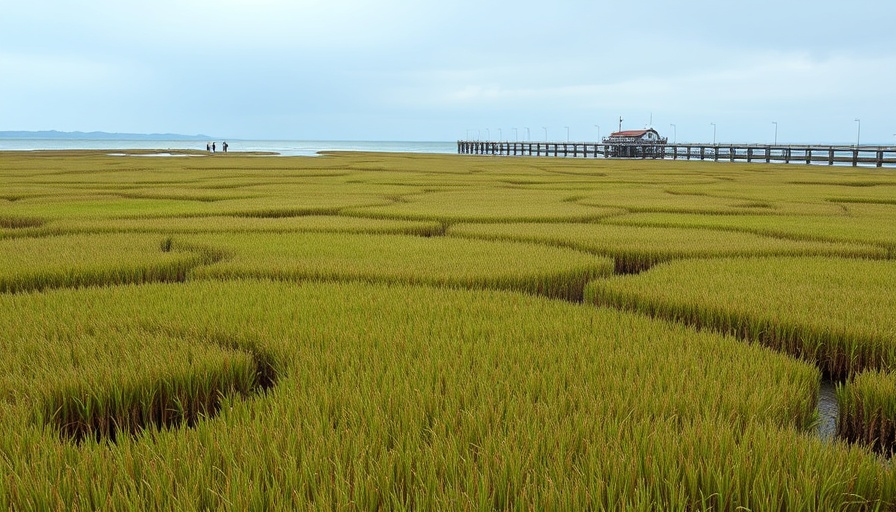
Singapore's Seagrass Meadows at Risk: What’s at Stake?
Singapore is moving forward with a contentious reclamation project around the biodiverse-rich Changi Beach, which has become a focal point for environmental advocates. As the government plans to convert 193 hectares of shoreline into an aviation logistics park by 2030, more than 1,300 citizens have signed a petition to protect this vital ecosystem. The push for preservation highlights the urgency of environmental conservation efforts amidst urban development.
What’s Driving the Citizen Petition?
The current petition, initiated by concerned residents, calls for the government to reconsider the project's scope in light of its potential impact on local biodiversity, specifically focusing on sensitive seagrass ecosystems. Proponents of the petition argue that the reclamation site is one of the last accessible areas for public engagement with Singapore’s coastal biodiversity. Activities such as beach cleanups, intertidal explorations, and citizen science initiatives thrive in this environment, further emphasizing its importance to the local community.
The Role and Concerns of Environmental Assessments
The Housing Development Board (HDB) has undertaken an Environmental Impact Assessment (EIA) to gauge the effects of the reclamation on coral and seagrass habitats. Despite reducing the project’s footprint by approximately one-fifth, community advocates argue that even under the most effective mitigation strategies, the inherent fragility of seagrass meadows cannot withstand heavy alterations. Issues surrounding the EIA process have also arisen; the requirement for the public to sign a non-disclosure agreement (NDA) to access the report prompted further critiques and apprehension about the transparency of environmental evaluations.
The Synergy of Urban Growth and Environmental Preservation
This situation in Singapore illuminates a broader dilemma faced by urban areas worldwide: how to balance development with ecological integrity. Sustainable living advocates stress the necessity of integrating green practices within urban planning. Innovations in sustainable architecture and urban design can facilitate growth while minimizing ecological footprints. For instance, the adoption of eco-friendly building materials and energy-efficient designs can support development without compromising natural resources.
Future Implications for Biodiversity and Ethical Stewardship
As Singapore’s government pushes towards sustainable development goals, critical conversations around biodiversity and ethical consumerism emerge. With the push for green energy and reduced carbon footprints, community involvement in environmental stewardship is paramount. Residents are increasingly becoming eco-conscious, seeking solutions that prioritize sustainability—whether through ethical fashion, reducing waste, or supporting green businesses. The Changi reclamation debate is more than just about a parcel of land; it's a reflection of a societal commitment to a sustainable future.
What’s Next for Singapore?
With the growing public outcry and petitions like the one concerning Changi Beach, it is evident that Singapore's path forward needs to embrace a collaborative approach. Policymakers and community members must engage in productive dialogues that facilitate sustainable practices while ensuring economic and developmental needs are met. This reclamation project serves as a pivotal case study reflecting the challenges and successes possible when a community stands up for its environment.
Taking Action for Our Environment
As individuals concerned for the planet, participating in local environmental campaigns can amplify community voices. By supporting sustainable initiatives, participating in conservation efforts, and advocating for transparency in environmental assessments, citizens can contribute to shaping their urban landscapes responsibly. The call for action is not just about one beach but about encouraging a legacy of sustainability—for Changi Beach today, and for the biodiversity of tomorrow.
 Add Row
Add Row  Add
Add 



Write A Comment